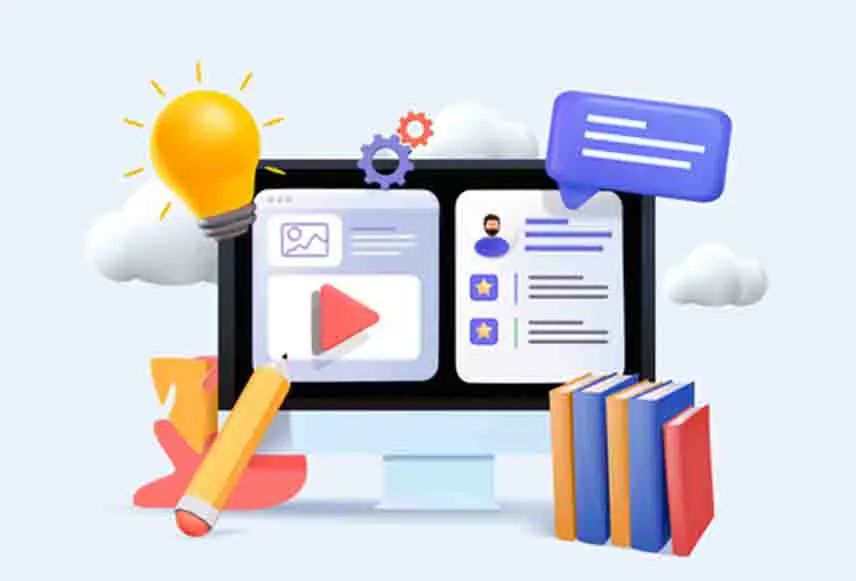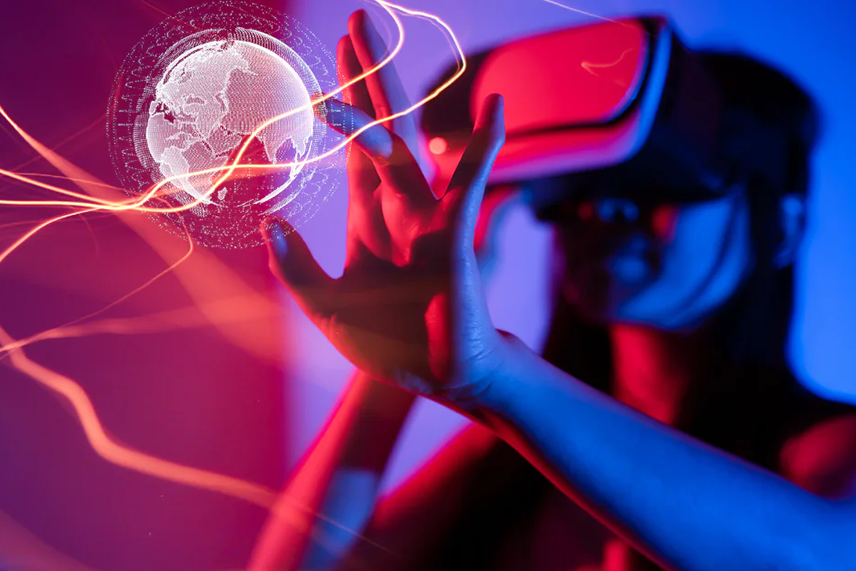In the last couple of years, the COVID-19 pandemic accelerated the adoption of digital communication. It also boosted popularity of technologies such as Augmented Reality/Virtual Reality (AR/VR) due to their ability to offer lifelike or immersive experiences. The AR and VR market is expected to reach a valuation of $114.5 billion by 2027 at a CAGR of 25.3% during the forecast period 2022-2027, according to MarketsandMarkets.
In our earlier blog post How 3D Technology Makes Learning More Effective, we talked about how the eLearning industry have evolved towards the adoption of 3D-model-based learning for greater effectiveness. In the future, we can certainly expect augmented reality and virtual reality to enhance the learning experience greatly.
Studies show that immersive environments cause our brains to react in the same way as they would in the real world. Therefore, immersive environments can be a real game changer in the world of eLearning.
“AR/VR can not only help learners to grasp abstract concepts far more effectively, but they also enable an environment that allows for practical experiences in simulated environment.”
For instance, think about corporate employees being virtually transported to the company’s headquarters or R&D Center for a walkabout with holographic 3D design models.
AR/VR technologies have extensive potential in several areas of learning. VR can help block or override distractions, thereby greatly enhancing learning outcomes since the experience is truly immersive. Here are a few examples:

Learning mechanical or physical processes
Let’s say a group of mechanical engineers need to familiarize themselves with the workings of the gearbox of a car. While traditional learning techniques can provide limited perspectives, a VR based experience can allow the learners to study the mechanics of the gearbox at close quarters. Learners can also observe the device from a variety of angles that would not be possible even in an actual physical environment.
Learners can try to virtually change gears and study the outcome as seen in the real world. Also, in the case of complex processes that might take time to understand, AR/VR tools offer unlimited opportunities to ‘practice’ processes virtually as many times as they wish.
This is especially important in instances where the physical location or product may not be easily accessible for training. It is also true for environments or use cases that can be potentially life-threatening. For example, consider a hydro-electric power station located at a remote location or a telecom tower with potentially hazardous radiation.
Another great example is in the area of medical education. The human body is highly complex. The ability to virtually observe the workings on organs and perform procedures in immersive simulated experiences can greatly enhance the quality of learning.
Learners can get immediate feedback from superiors and peers, allowing them to enhance their understanding and build confidence.
You can catch a demo for a meeting room in 3D to help evaluate information and data security risks.
Watch Demo
Simulating real-life environments
One great example is soft skills training. People often find it intimidating to interact with colleagues in a work environment. Effective communication lies at the heart of great team building. So, practicing these skills in a simulated environment can help hone these skills and also develop much-needed confidence to carry this forward in real-world situations.
The same also holds true in the case of training in areas such as health, safety, and environment. For instance, think about training related to fire safety or handling of dangerous goods and chemicals, which are critically important but difficult to replicate in a real-life environment.
AR experiences can help train teams about products, services, or concepts in a highly engaging manner because they can help create ‘real’ experiences. For instance, VR headgear such as Oculus Rift can allow participants to learn using techniques such as role playing.
Discovering opportunities for remote collaboration
One of the biggest advantages that virtual environments offer is the opportunity for people to collaborate seamlessly in a virtual environment irrespective of their physical location. This is bound to become even more valuable in the world of distributed and remote workplaces where teams are still expected to work together as a team and execute tasks collaboratively despite physical distances.
Here’s an example of immersive learning experience for the workforce to learn about bullying and how to avoid it.
Both AR/VR provide an opportunity for trainers to better engage their students through immersive experiences that make learning much more practical, effective, and enjoyable. And considering the growth of both AR and VR industries, it’s no wonder the educational sector will take advantage of both.








